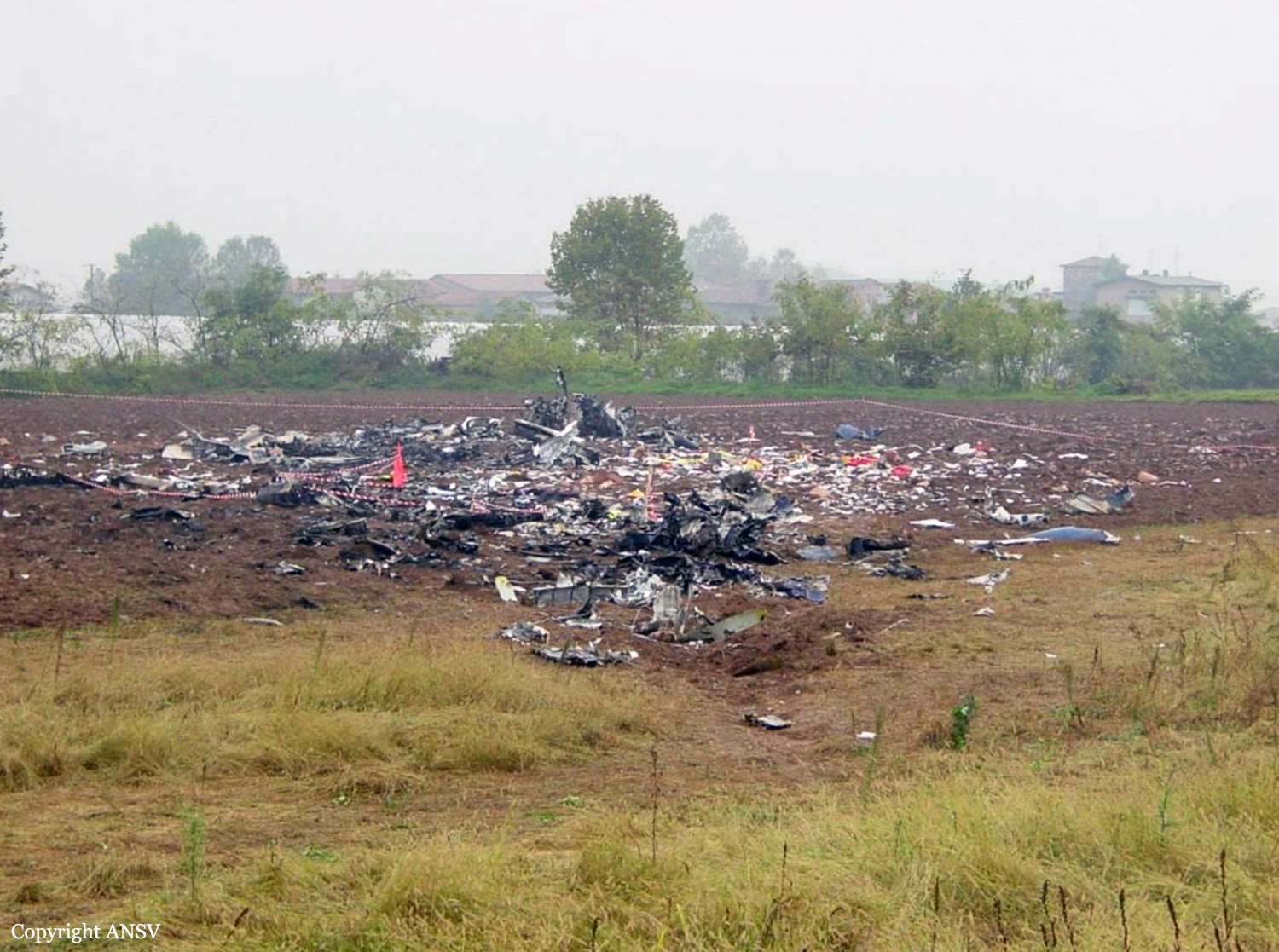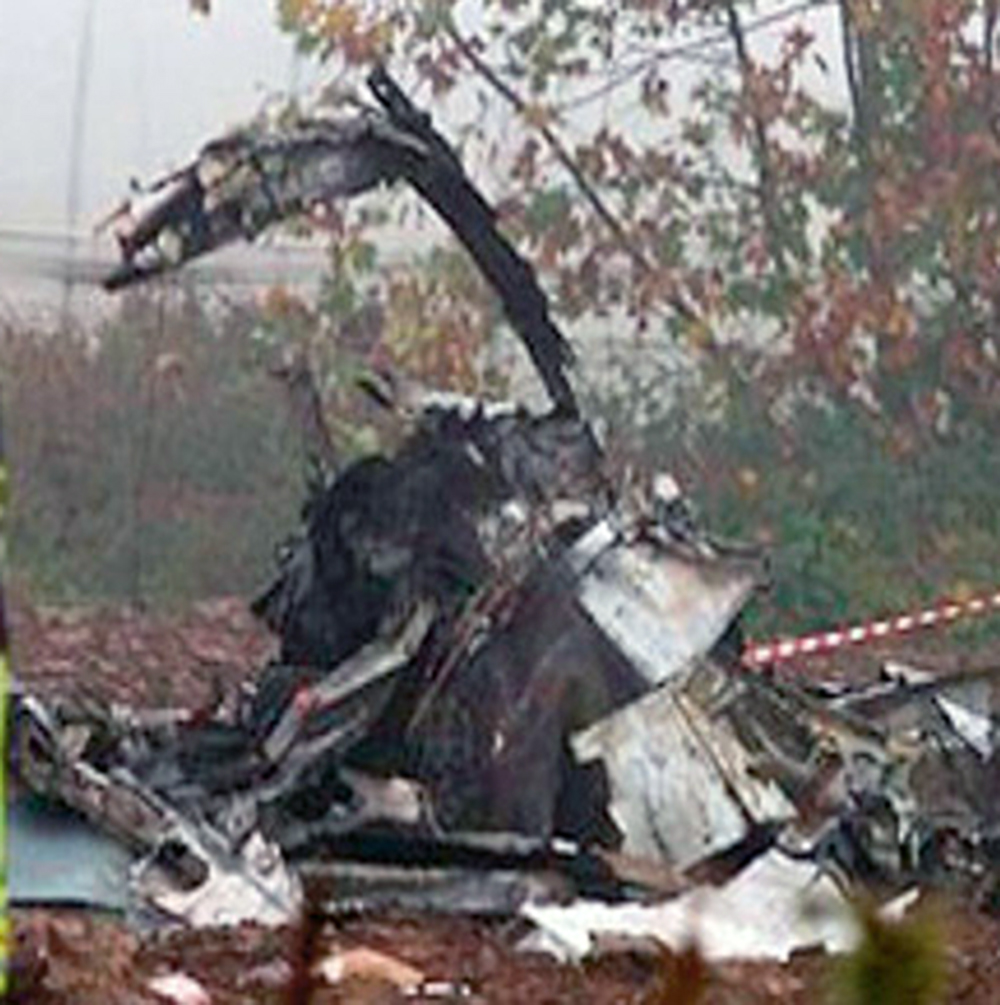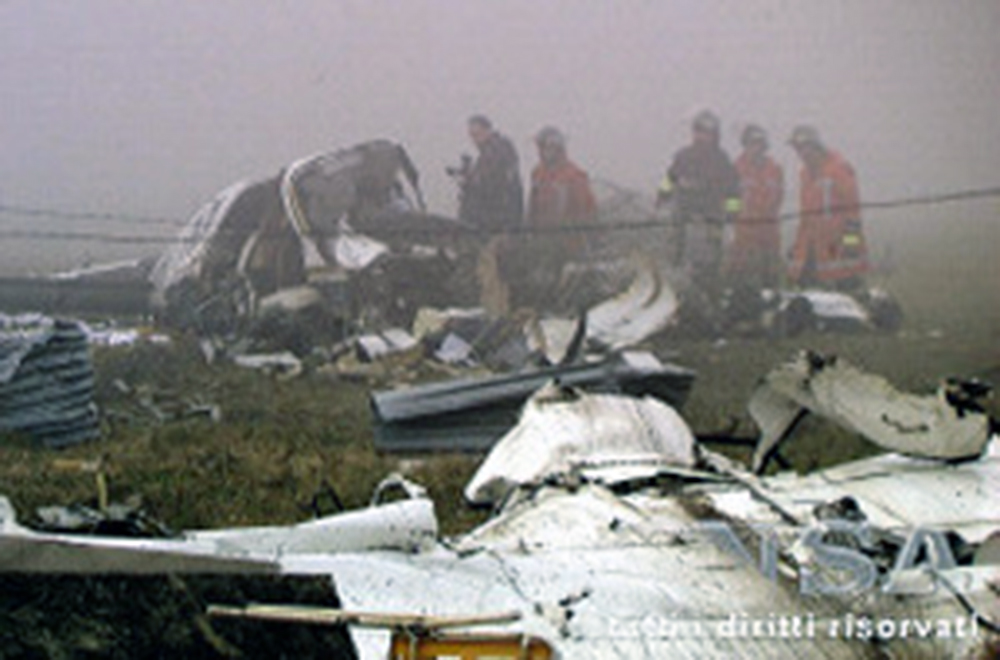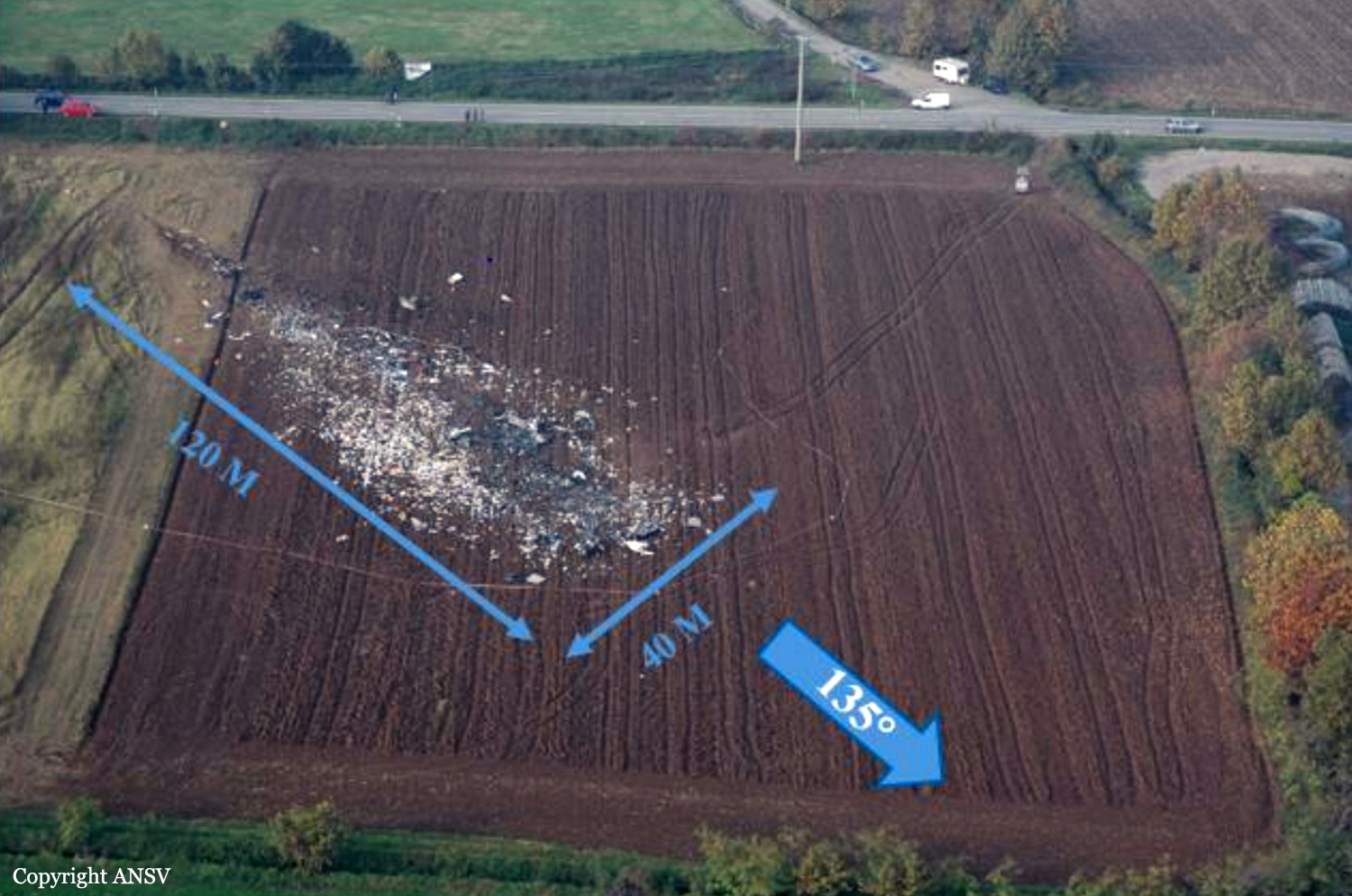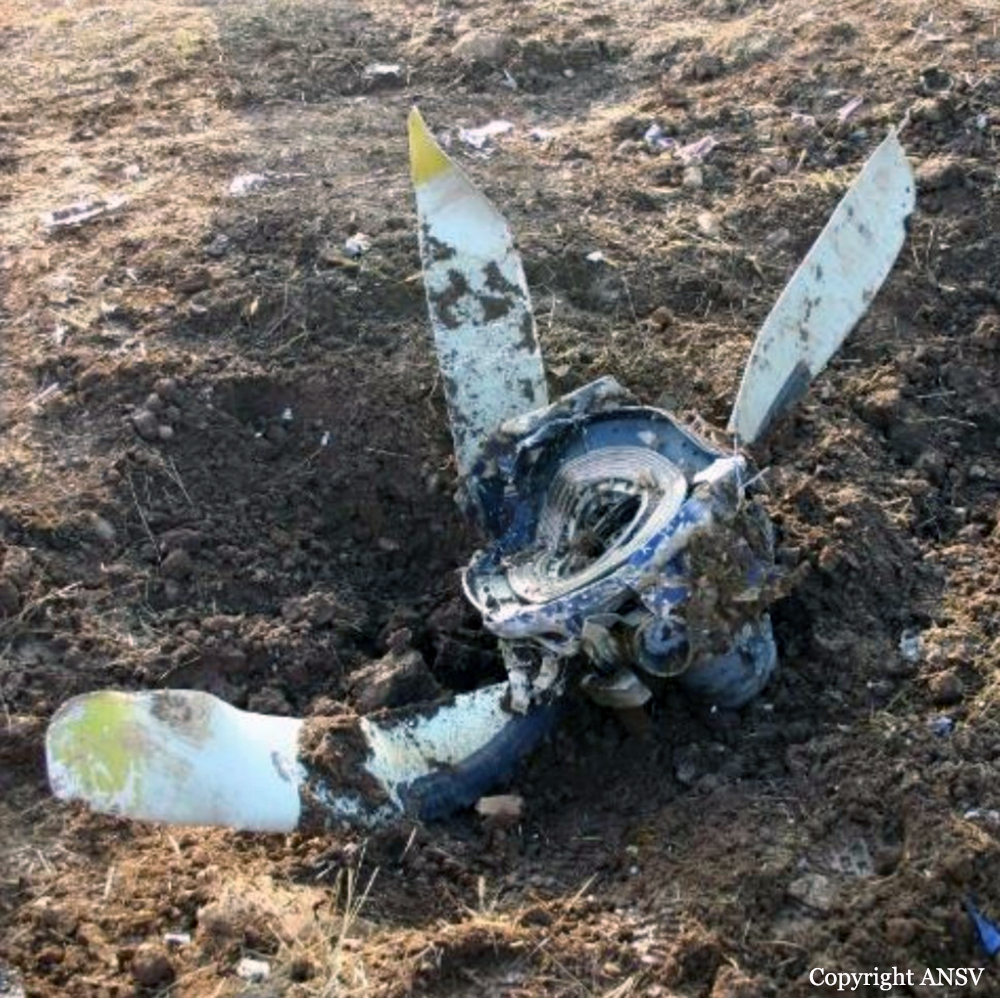Country
code
Lombardy
Crash of a Pilatus PC-12/47E in Milan: 8 killed
Date & Time:
Oct 3, 2021 at 1307 LT
Registration:
YR-PDV
Survivors:
No
Schedule:
Milan - Olbia
MSN:
1532
YOM:
2015
Crew on board:
1
Crew fatalities:
Pax on board:
7
Pax fatalities:
Other fatalities:
Total fatalities:
8
Circumstances:
The single engine aircraft departed Milan-Linate Airport runway 36 at 1304LT, bound to Olbia with 8 people on board. During initial climb, the pilot completed two successive turns to the right then continued to the south. At an altitude of 5,300 feet, the aircraft entered an uncontrolled descent and crashed on an industrial building under renovation and located about 1,8 km southwest of the runway 36 threshold. The aircraft was totally destroyed by impact forces and a post crash fire and all 8 occupants were killed, among them the Romania businessman Dan Petrescu. The building suffered severe damages as well as few vehicles in the street. There were no injuries on the ground.
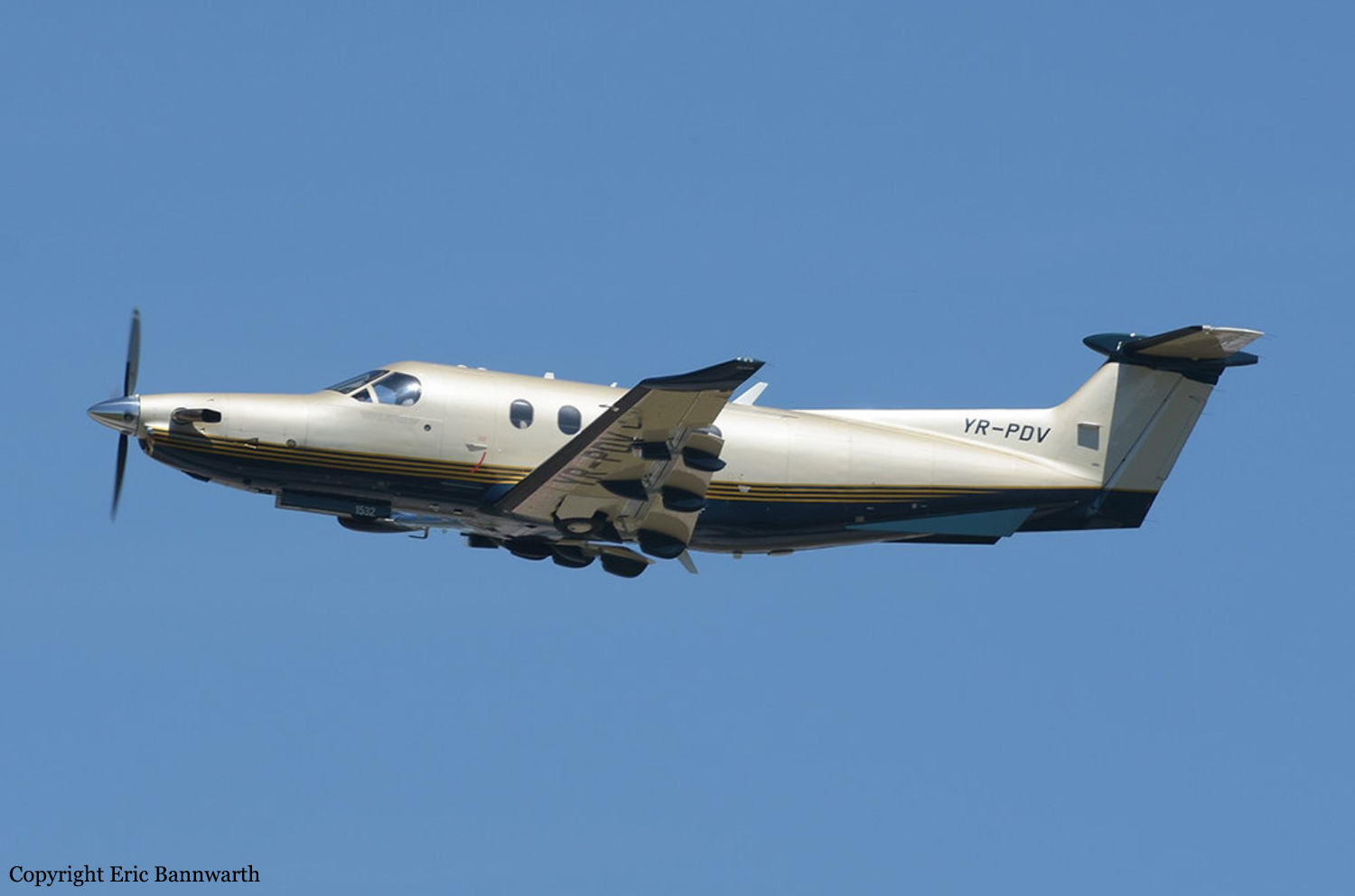
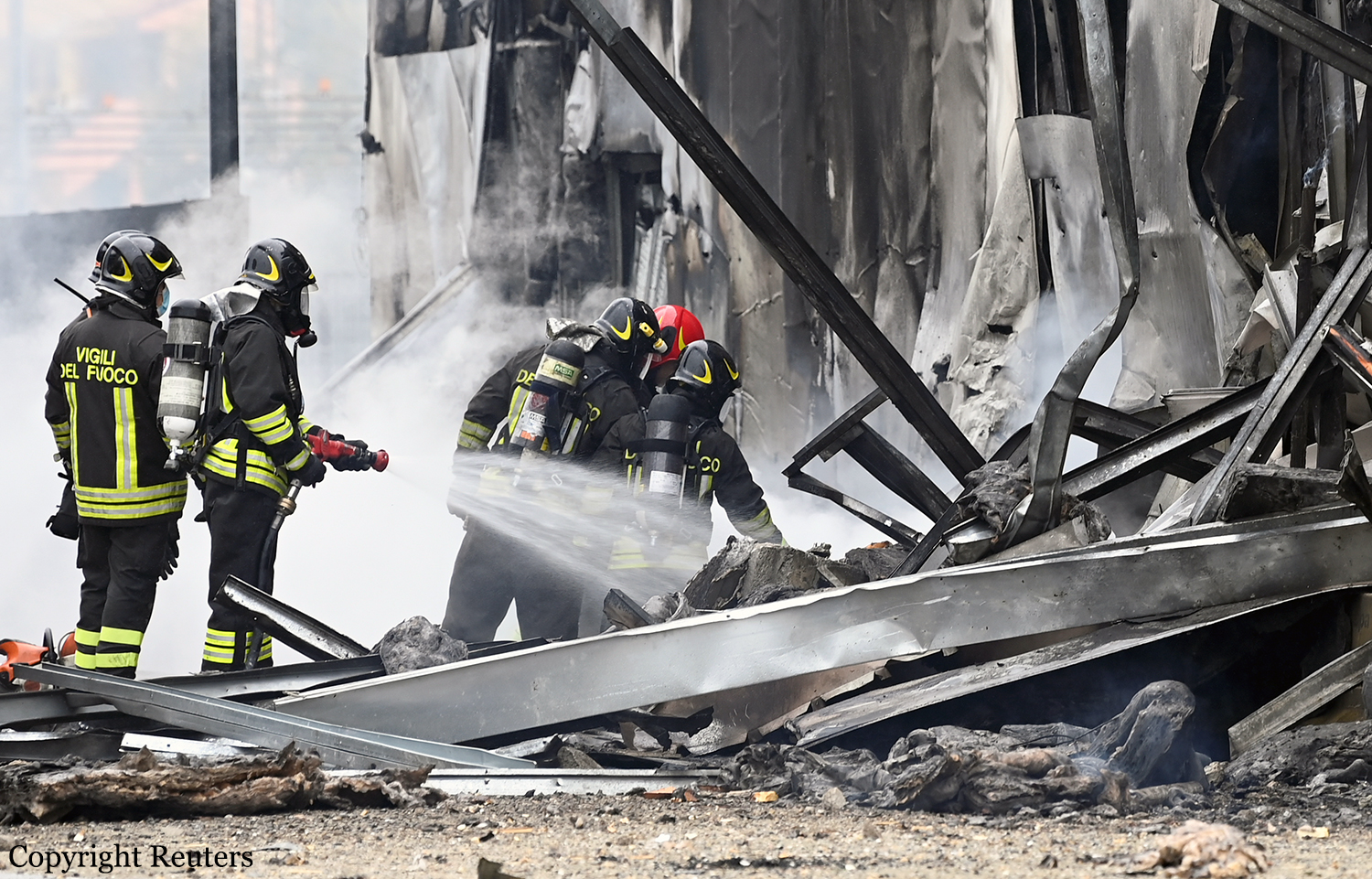
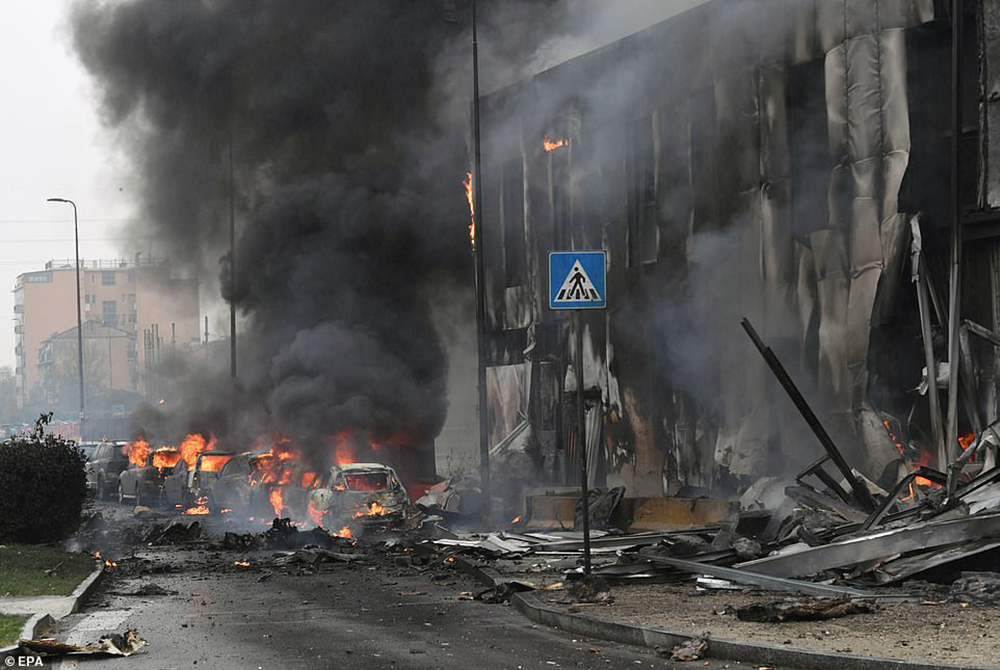
Crash of a Pilatus PC-6/B2-H4 Turbo Porter in Livrasco: 2 killed
Date & Time:
Sep 20, 2020 at 0949 LT
Registration:
T7-SKY
Survivors:
Yes
Schedule:
Cremona - Cremona
MSN:
902
YOM:
1993
Crew on board:
1
Crew fatalities:
Pax on board:
8
Pax fatalities:
Other fatalities:
Total fatalities:
2
Captain / Total hours on type:
2500.00
Aircraft flight hours:
4920
Circumstances:
The single engine airplane departed Cremona-Migliaro Airport in the morning on a local skydiving flight, carrying eight skydivers and one pilot. This was the second sortie of the day. Once the altitude of 4,000 metres was reached, all eight skydivers successfully jumped out and the pilot started the descent to return to the airport. While descending to runway 11, the airplane collided with the eighth skydivers that hit the left wing and the vertical stabilizer. A large section of the left wing separated, causing the airplane to enter an uncontrolled descent and to crash in a cornfield located in Livrasco, about two km north of the airport. The pilot and the skydiver were killed. The airplane was totally destroyed.
Probable cause:
The cause of the accident was an in-flight collision between the Pilatus PC-6 descending and a free-falling track-suit parachutist. This collision resulted in a loss of control of the aircraft in flight and the destruction of the left wing of the aircraft, which fell to the ground uncontrolled.
The following factors contributed to the accident:
- Inadequate coordination between pilot and parachutist in relation to their respective descent and drift paths,
- The meteorological conditions at the time of the parachutist's exit from the aircraft, which took place in cloud and in the absence of visual contact with the ground, in a situation, therefore, incompatible with VFR flight rules and ENAC regulations for parachuting,
- The absence of codified procedures at the Italian level, integrating the procedures for jumps with those of aircraft operators used for parachute jumps, including deconfliction between descending aircraft and parachutists performing drift or wingsuit jumps.
The inadequate coordination between the pilot and parachutist in relation to their respective descent and drift paths could also be attributable to the absence of a responsible person to ensure that the above mentioned coordination was in place. In addition to the above mentioned criticalities, the ANSV investigation activity revealed, also in the present case, a general lack of rules and controls regarding parachuting activities carried out outside of training activities, which reasonably contributed to the occurrence of the investigated aircraft accidents.
The following factors contributed to the accident:
- Inadequate coordination between pilot and parachutist in relation to their respective descent and drift paths,
- The meteorological conditions at the time of the parachutist's exit from the aircraft, which took place in cloud and in the absence of visual contact with the ground, in a situation, therefore, incompatible with VFR flight rules and ENAC regulations for parachuting,
- The absence of codified procedures at the Italian level, integrating the procedures for jumps with those of aircraft operators used for parachute jumps, including deconfliction between descending aircraft and parachutists performing drift or wingsuit jumps.
The inadequate coordination between the pilot and parachutist in relation to their respective descent and drift paths could also be attributable to the absence of a responsible person to ensure that the above mentioned coordination was in place. In addition to the above mentioned criticalities, the ANSV investigation activity revealed, also in the present case, a general lack of rules and controls regarding parachuting activities carried out outside of training activities, which reasonably contributed to the occurrence of the investigated aircraft accidents.
Final Report:

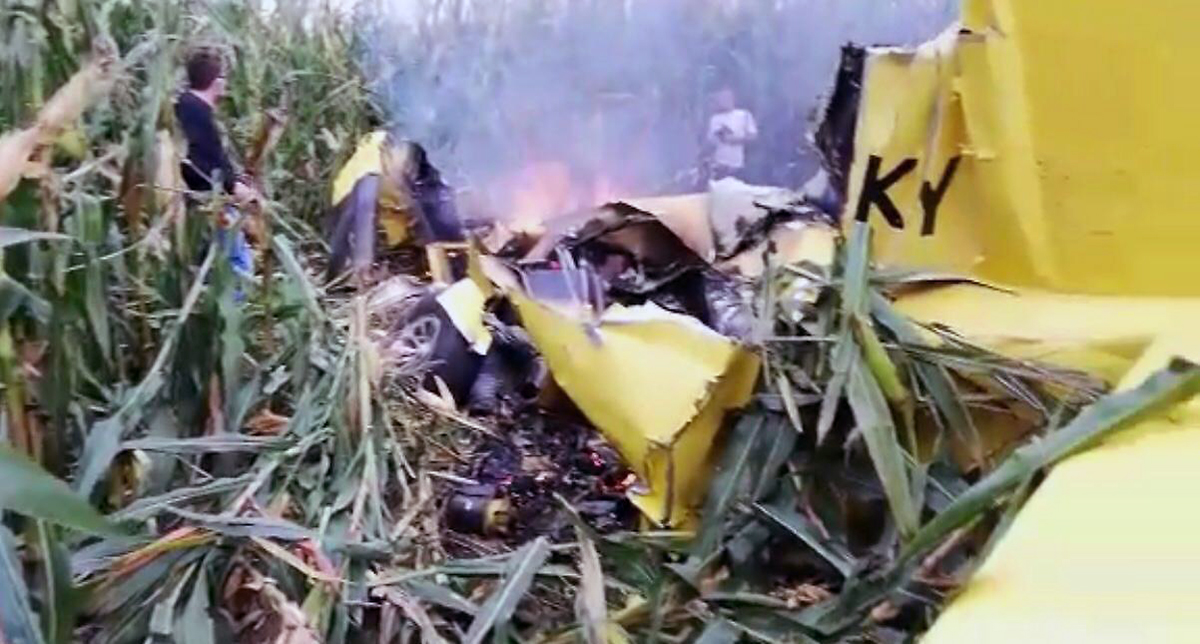

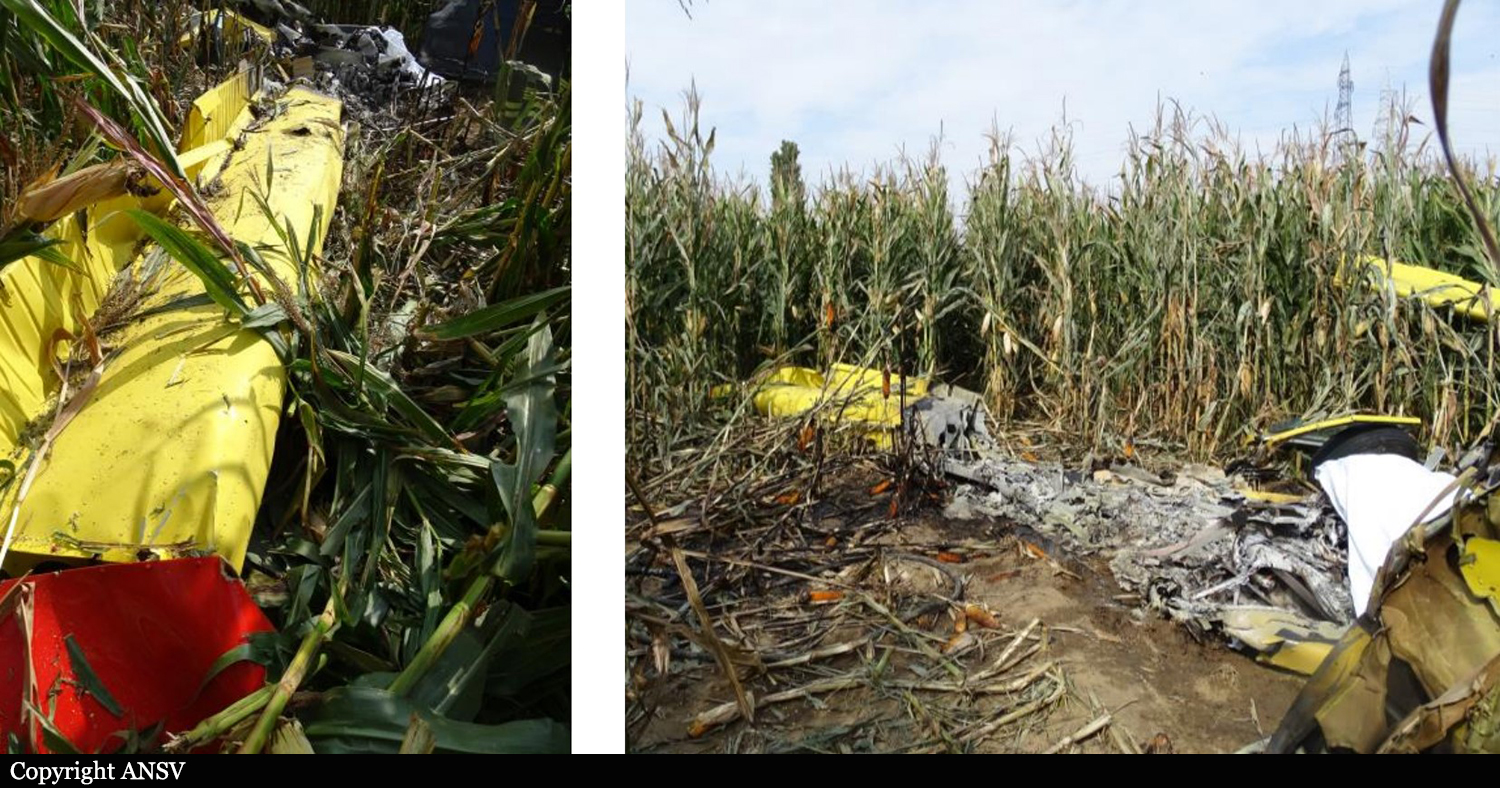



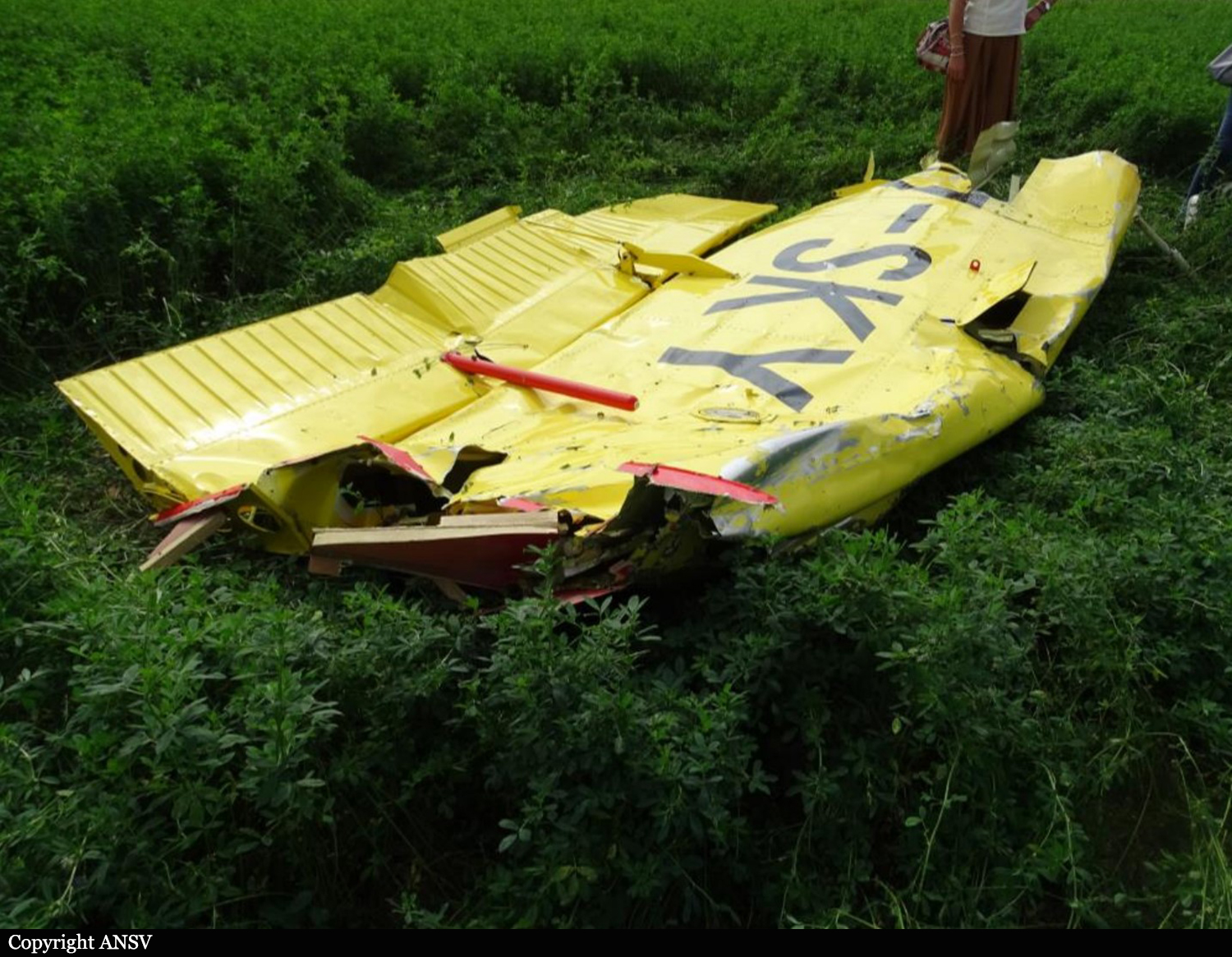

Crash of a Boeing 737-476 in Bergamo
Date & Time:
Aug 5, 2016 at 0407 LT
Registration:
HA-FAX
Survivors:
Yes
Schedule:
Paris-Roissy-CDG - Bergamo
MSN:
24437/2162
YOM:
1991
Flight number:
QY7332
Crew on board:
2
Crew fatalities:
Pax on board:
0
Pax fatalities:
Other fatalities:
Total fatalities:
0
Captain / Total hours on type:
2254.00
Copilot / Total hours on type:
86
Aircraft flight hours:
65332
Circumstances:
The aircraft departed Paris-Roissy-Charles de Gaulle Airport at 0254LT on a cargo flight (service QY7332) to Bergamo on behalf of DHL Airways. Upon arrival at Bergamo-Orio al Serio Airport, the crew encountered poor weather conditions with thunderstorm activity, heavy rain falls and strong wind. The aircraft crossed the runway threshold at a speed of 156 knots and landed 18 seconds later, 2,000 metres pas the runway threshold. Unable to stop within the remaining distance (runway 28 is 2,807 metres long), the aircraft overran, went through the perimeter fence, lost its undercarriage and both engines and eventually stopped in a motorway, some 520 metres pas the runway end. Both crew members evacuated safely and the aircraft was destroyed.
Probable cause:
The causes of the accident are mainly due to the human factor. In particular, the accident was caused by the runway overrun during the landing phase, caused by a loss of situational awareness relating to the position of the aircraft with respect to the runway itself. This loss of situational awareness on the part of the crew caused a delay in contact with the runway, which occurred, at a still high speed, in a position too far to allow the aircraft to stop within the remaining distance.
Contributing to the dynamics of the event:
- The commander's prior decision not to carry out a go-around procedure (this decision is of crucial importance in the chain of events that characterized the accident),
- Inadequate maintenance of flight parameters in the final phase of landing,
- Failure of the crew to disconnect the autothrottle prior to landing,
- Poor lighting conditions with the presence of storm cells and heavy rain falls at the time of the event (environmental factor), which may have contributed to the loss of situation awareness,
- The attention paid by the crew during the final phase of the flight, where both pilots were intent to acquire external visual references and did not realize that the aircraft crossed over the runway at high speed for 18 seconds before touchdown,
- The lack of assertiveness of the first officer in questioning the commander's decisions.
Finally, it cannot be excluded that a condition of tiredness and fatigue may have contributed to the accident, even if not perceived by the crew, which may have influenced the cognitive processes, in particular those of the captain, interfering with his correct decision making process.
Contributing to the dynamics of the event:
- The commander's prior decision not to carry out a go-around procedure (this decision is of crucial importance in the chain of events that characterized the accident),
- Inadequate maintenance of flight parameters in the final phase of landing,
- Failure of the crew to disconnect the autothrottle prior to landing,
- Poor lighting conditions with the presence of storm cells and heavy rain falls at the time of the event (environmental factor), which may have contributed to the loss of situation awareness,
- The attention paid by the crew during the final phase of the flight, where both pilots were intent to acquire external visual references and did not realize that the aircraft crossed over the runway at high speed for 18 seconds before touchdown,
- The lack of assertiveness of the first officer in questioning the commander's decisions.
Finally, it cannot be excluded that a condition of tiredness and fatigue may have contributed to the accident, even if not perceived by the crew, which may have influenced the cognitive processes, in particular those of the captain, interfering with his correct decision making process.
Final Report:
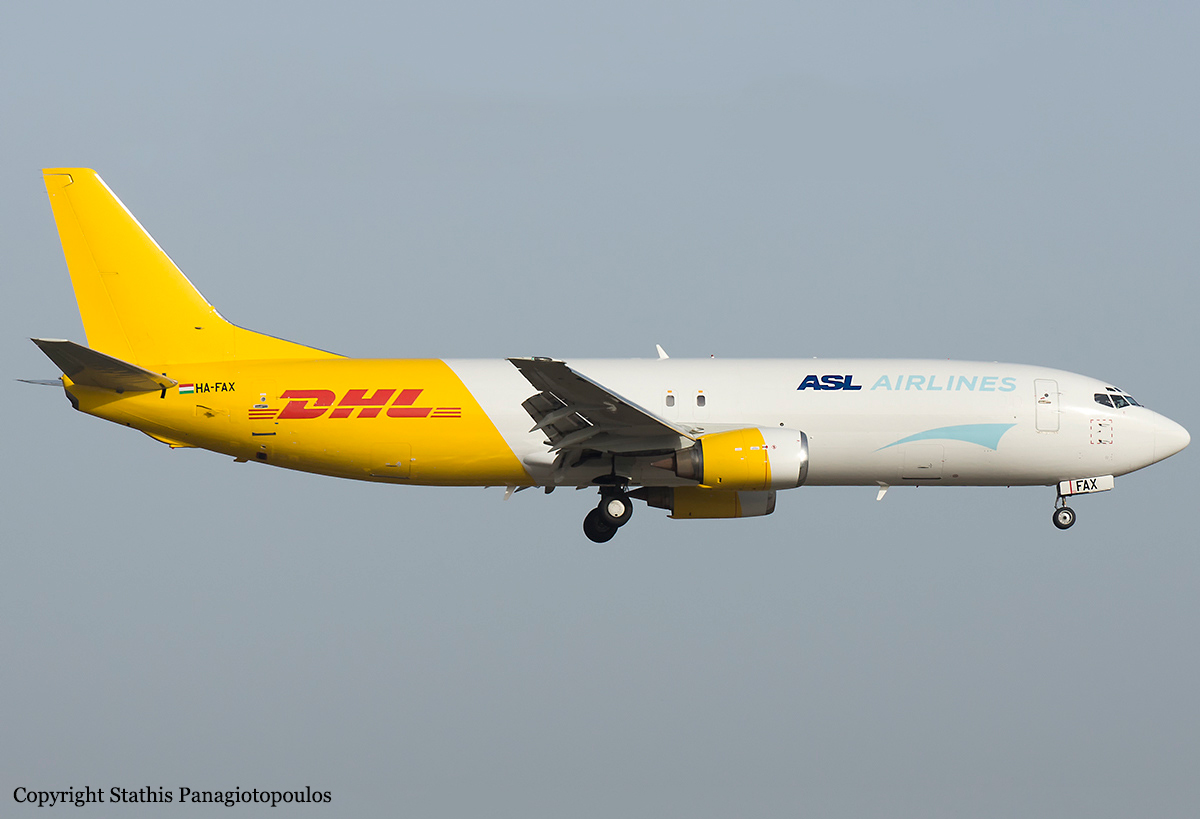

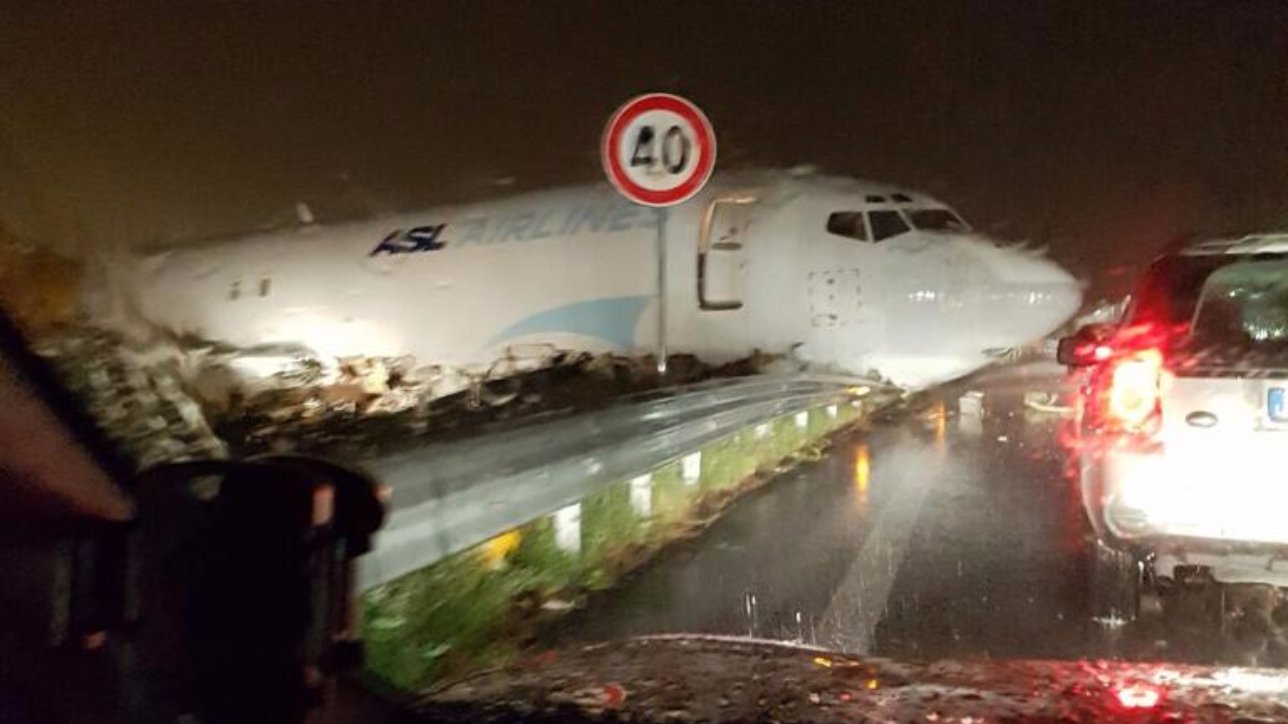
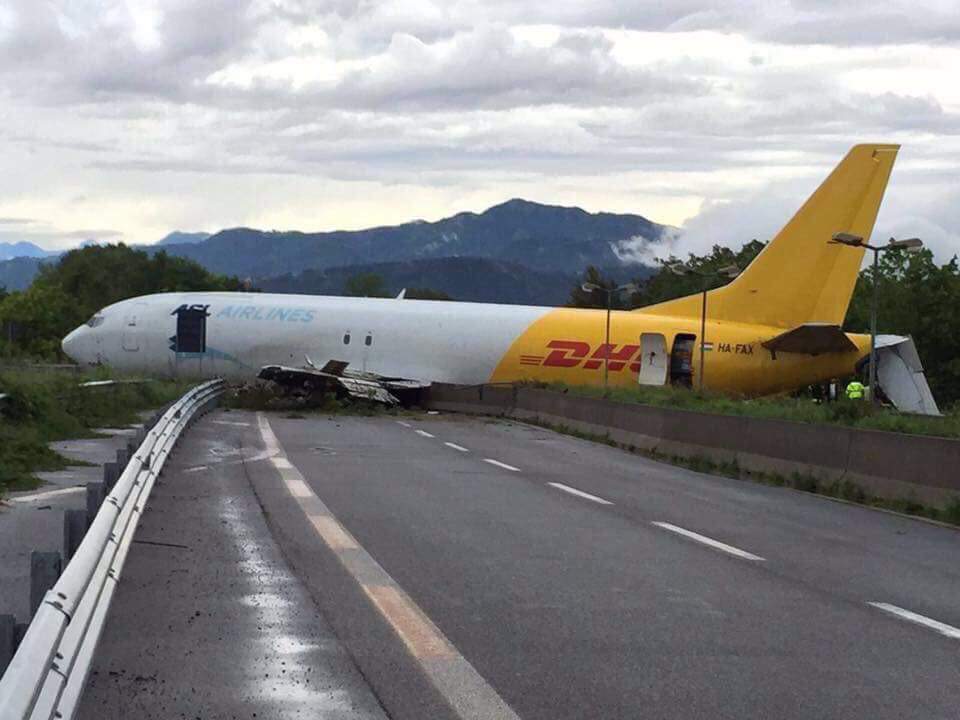
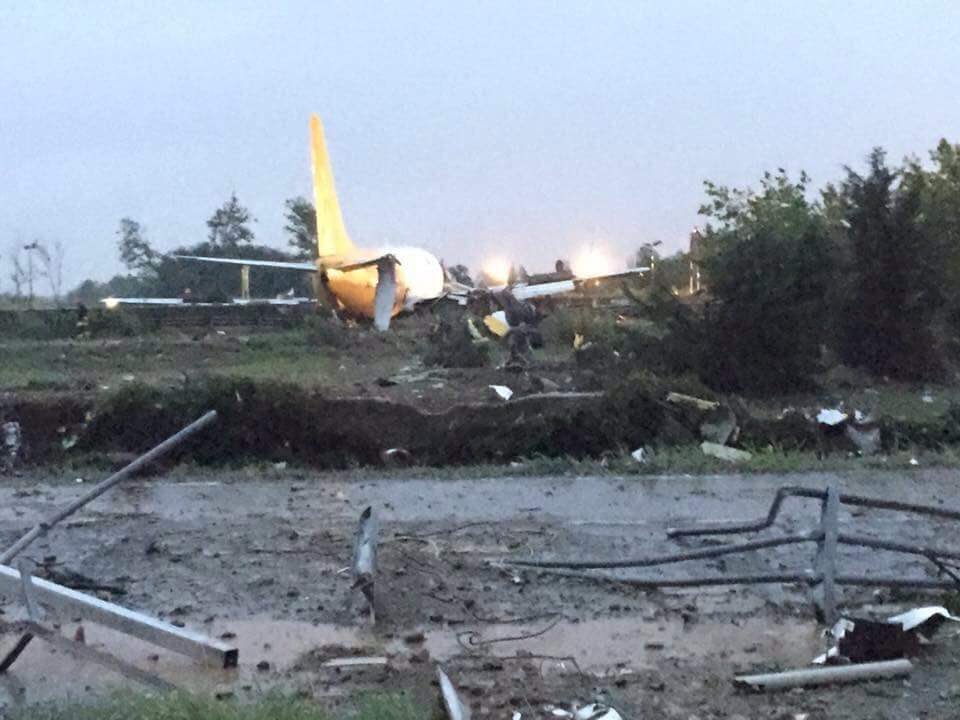
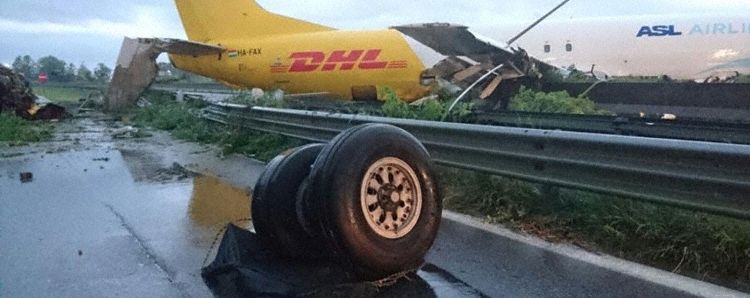
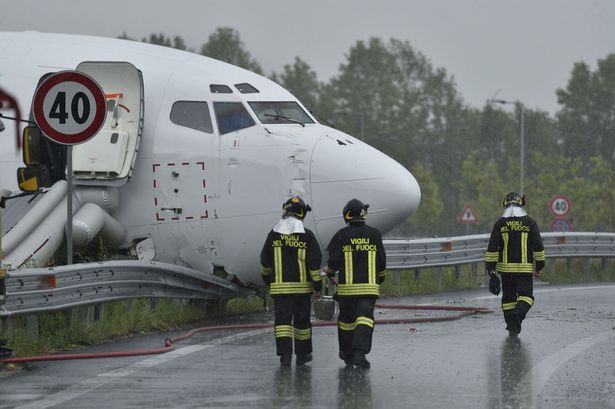


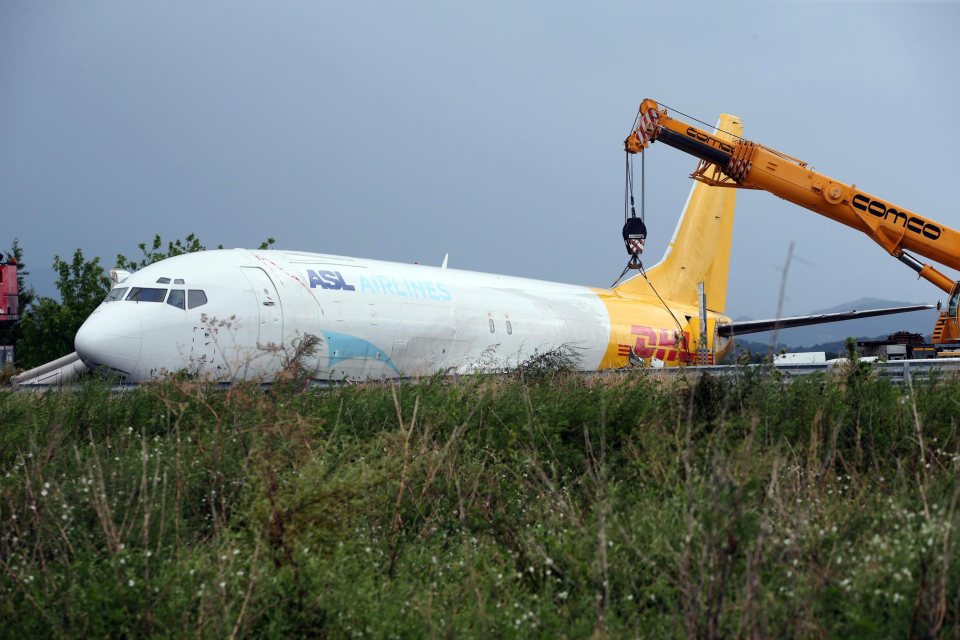
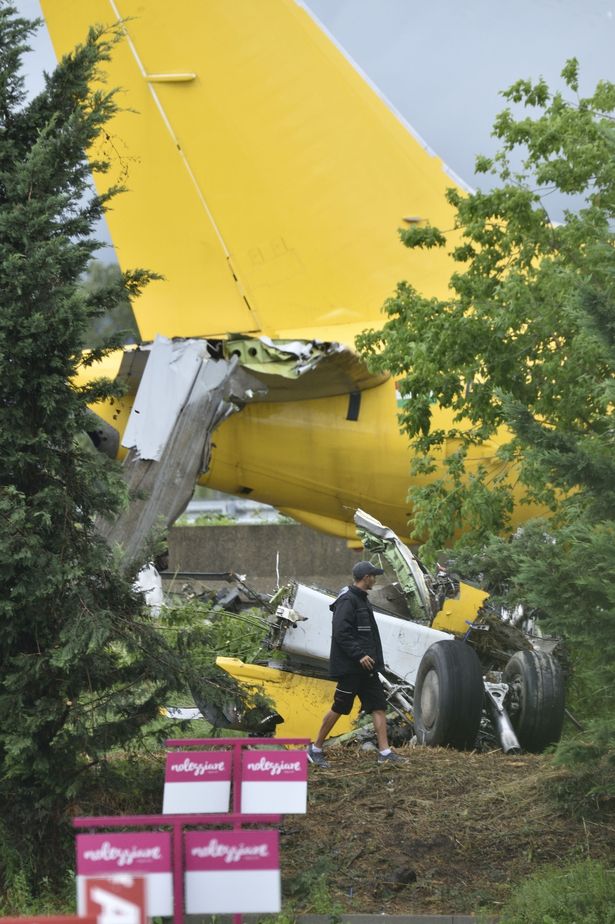


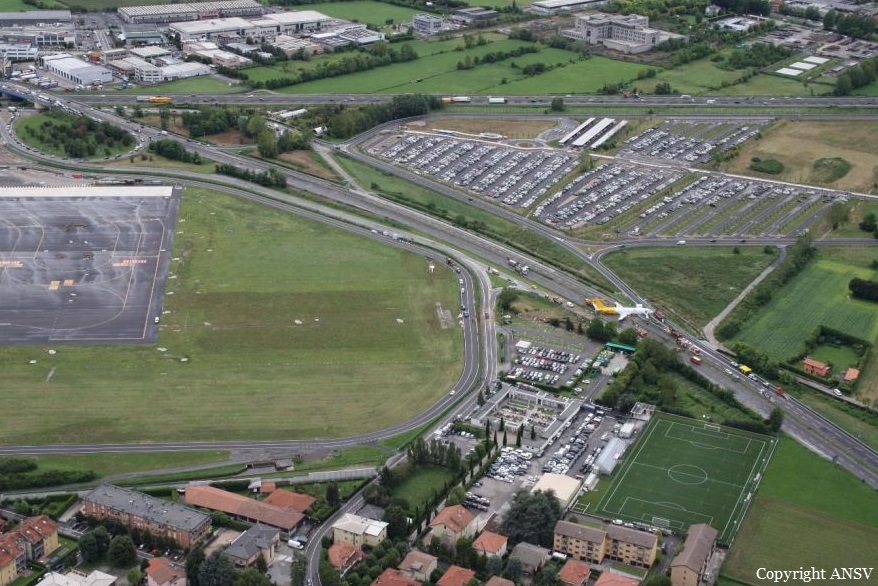
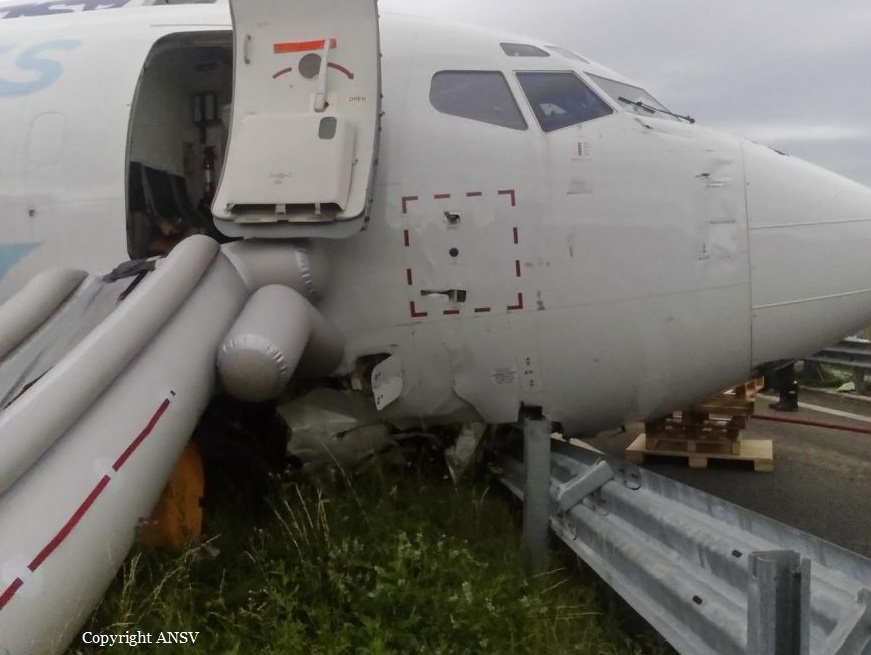

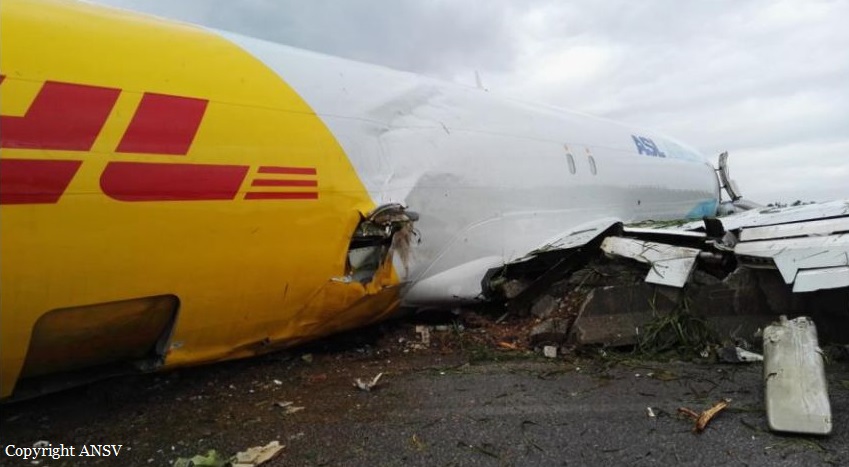
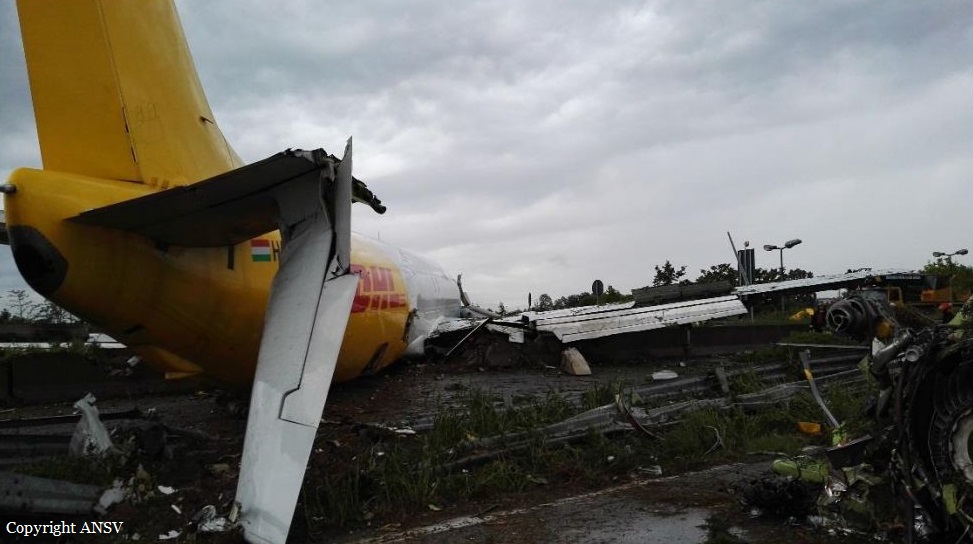
Crash of a Let L-410UVP-E19A in Bergamo: 3 killed
Date & Time:
Oct 30, 2005 at 2204 LT
Registration:
9A-BTA
Survivors:
No
Schedule:
Bergamo - Zagreb
MSN:
91 25 38
YOM:
1991
Flight number:
TDR729
Crew on board:
2
Crew fatalities:
Pax on board:
1
Pax fatalities:
Other fatalities:
Total fatalities:
3
Captain / Total hours on type:
760.00
Copilot / Total hours on type:
200
Aircraft flight hours:
7185
Circumstances:
The twin engine aircraft departed Bergamo-Orio al Serio Airport on a night cargo service to Zagreb, carrying one passenger (the captain's wife), two pilots and a load of 1,600 kilos of small packages. After takeoff from runway 28, while climbing in foggy conditions, the aircraft entered a left turn then descended, collided with a powerline and crashed in an open field located one km north of the airfield. The aircraft disintegrated on impact and all three occupants were killed.
Probable cause:
As far as is established, documented and substantiated, the cause of the accident is due to a loss of control in flight of the aircraft. Although the cause of this loss of control could not be established with incontrovertible certainty, it can reasonably be assumed that it was caused by a deterioration in the situation awareness of the crew during the initial climb immediately after take-off. The loss of such situation awareness may have been contributed jointly or severally:
- The displacement or incorrect positioning of the load, which would have induced a moment of rotation on the longitudinal axis of the aircraft (roll) not immediately perceived and counteracted by the crew;
- Spatial disorientation, as a result of the possible optical illusion produced by the high speed "E" TWY lights, which, crossing the thick fog, could have induced the pilot to veer, thus causing the final loss of control of the aircraft. In addition, the limited flight experience of the co-pilot and the inadequate application of CRM techniques by the crew did not allow for a timely identification of the hazardous situation and the necessary actions to recover the aircraft.
- The displacement or incorrect positioning of the load, which would have induced a moment of rotation on the longitudinal axis of the aircraft (roll) not immediately perceived and counteracted by the crew;
- Spatial disorientation, as a result of the possible optical illusion produced by the high speed "E" TWY lights, which, crossing the thick fog, could have induced the pilot to veer, thus causing the final loss of control of the aircraft. In addition, the limited flight experience of the co-pilot and the inadequate application of CRM techniques by the crew did not allow for a timely identification of the hazardous situation and the necessary actions to recover the aircraft.
Final Report:

